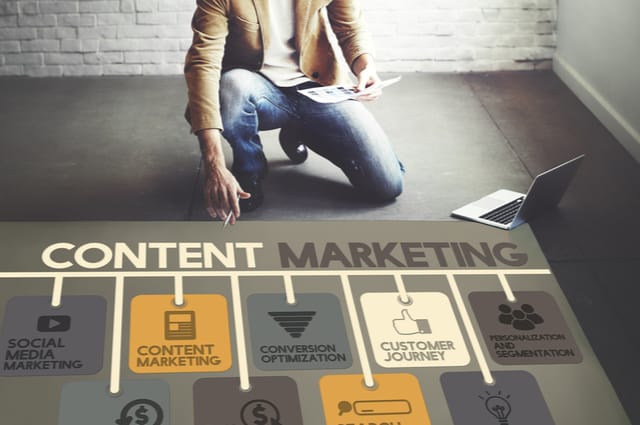Inbound Lead Generation: What Are the Best Ways to Create Quality Leads?
Discover how inbound lead generation integrates into your marketing strategy. Identify simple techniques to begin generating leads for your business.
Let’s start by describing a lead. Then we’ll go through what inbound lead generation is. We will also discuss its purpose, lead generation strategy, why you need it, and how to classify lead categories. For instance, sales qualified leads.
We will also cover how to produce leads as well as why inbound lead generation is considerably more effective than purchasing leads.
What is the definition of a lead?
A lead is somebody who expresses interest in a company’s service or product. Leads are often contacted by a company or organization after initiating contact. It might be acquired by entering personal details for an event, demo, or subscription, instead of receiving a call or email from someone who acquired their contact information.
Leads are part of a larger cycle that consumers go through from visitor to consumer. All leads are mostly not considered equivalent, and there are various types of leads based on how they are chosen and where they are placed in the sales pipeline.
What is a lead generation and its purpose?
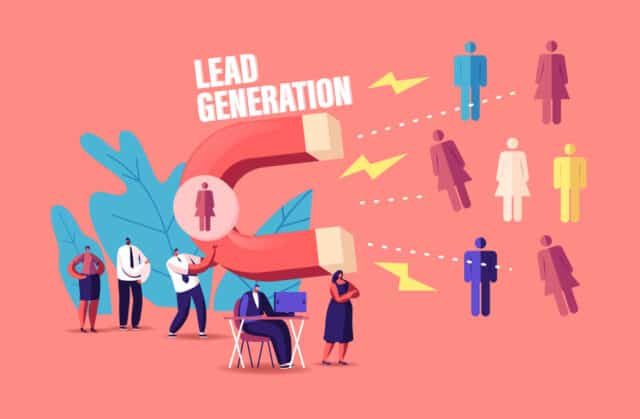
The technique of drawing prospects to your organization and developing their interests to turn them into clients is known as lead generation. Online applications, social media posts, discounts, live events, coupons, video content, blog posts, and creating valuable content are all ways to attract potential customers. These are just a few examples of lead generation strategies. It’s a method of introducing potential consumers to your company and taking them on the goal of completing a purchase.
Creating leads is a critical step in becoming a satisfied client. You may employ to generate leads and direct them to your offerings with the help of your marketing efforts.
Lead generation is the next stage of the inbound marketing process. It happens when you’ve gathered an audience and are prepared to turn those visitors into customers for your sales team. The move from a stranger to a customer is far smoother when a stranger establishes a connection with you by exhibiting a genuine interest in your business.
Process of Generating Leads
Now that we’ve established how lead generation comes into the inbound marketing journey let’s go over its stages.
a) Initially, a visitor learns about your company via one of your marketing channels. It could be through your landing page, blog, paid advertising, digital marketing activities, or social media platforms.
b) The user then taps on your CTA, which can be an image, link, or other related material that prompts them to act immediately.
c) This CTA directs your visitor to a landing page or opt-in form. It could be part of a website meant to collect new lead information in return for an offer. The offer must be of sufficient perceived value to entice a visitor to supply personal details to obtain access to it.
d) Your user must complete a form or survey on the landing page in exchange for the offer. Although a form can potentially be placed anywhere on your website, they are commonly kept on landing pages.
To recapitulate, a user clicks a CTA, which directs them to a page wherein they complete a form to receive an offer, during which time they are referred to as a lead.
Wow! You’ve got a new lead. It is if you follow industry best practices for lead-capture forms. Isn’t it amazing how everything falls next to each other?
What does “generate inbound leads” imply?

Inbound lead generation is a strategy for recruiting clients for your business. It occurs when a corporation distributes tailored material to appeal to its ideal consumer. This information is intended to compel the prospect to take action. Therefore, initiate a two-way connection that will eventually result in a sale.
This has increased in favor of a B2B lead generating approach in the last decade since it corresponds to how corporate clients want to buy. This is because prospects prefer to conduct their own research on products and services before engaging with salespeople.
Through inbound lead generation, the client has control over when and how they connect with the sales organization. It is the inverse of outbound lead generation. The firm initiates contact with a prospect who they feel would purchase their product.
What exactly are inbound leads?
Any B2B prospect responding to material created as part of an inbound lead creation strategy is considered an inbound lead. For example, an answer may be:
- I’m downloading an eBook.
- I’m filling out a survey.
- After reading an article, I called the sales staff.
Not all incoming leads are created equal. B2B companies will grade leads based on how they reply and how inclined they are to be a customer. Some instances of inbound lead phases are as follows:
Marketing Qualified Lead (MQL)
A lead who has viewed and interacted with a piece of information but is still indecisive. They aren’t ready for a sales call just yet, but you may email them for more details. An MQL is a person who answers a landing page form to receive an offer.
Sales Qualified Lead (SQL)
A sales qualified lead is an individual who has expressly shown an interest in acquiring your goods. Now is the moment to engage the assistance of your sales team. A SQL contact is someone who completes a form to ask inquiries about your service or product.
Product Qualified Lead (PQL)
Businesses who include a free or restricted version of their product with the opportunity to upgrade, that’s where your sales team comes in, leverage Product Qualified Leads. PQL is a consumer who signs up for your free trial. However, then inquires regarding features or services accessible for a fee.
Service Qualified Lead
Contacts or customers who have indicated a willingness to become prospective customers to your service team are service-qualified leads. A client who notifies their customer service agent that they want to upgrade their existing product subscription is an instance of a service-qualified lead. At this point, the customer service professional will up-level this consumer to the appropriate sales team or sales rep.
Who is in charge of the inbound lead generation process?
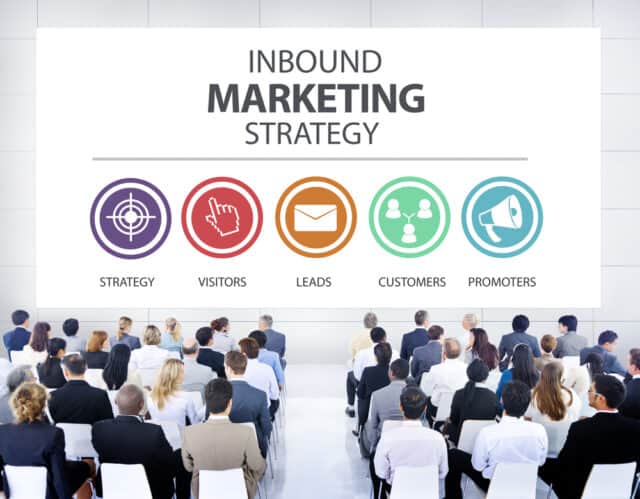
Your B2B marketing team is the starting point for inbound lead generation. It is up to your marketing team, digital marketing, and content marketers to effectively market and devise a plan for attracting inbound leads. They will then create valuable content and manage the distribution channels.
However, among the finest B2B organizations, sales and marketing teams will collaborate on inbound lead generation strategies.
At current conversion rates, the Business – to – business sales team will have the proper insight into how many more leads are needed to accomplish their targets. Sales representatives will also be aware of who they should target. They also know what their current clients have to say.
What are the most effective inbound lead generating strategies?
There are several inbound lead-generating tactics available, with new concepts being developed regularly. Here are three of the most well-known ones.
Lead magnets are used to increase the size of an email list
You may send the material and initiate a dialog after having the prospect’s email address. Offer the prospect a free eBook or PDF, a whitepaper, or a webinar in return for their email address.
Content Marketing
Blogs, news articles, or articles such as the one you are reading right now are a terrific method to have your brand recognized on search engines. Subsequently, portray yourself as an expert in your area. Doing search engine optimization for this content will also help with your inbound lead generation and inbound marketing methods.
Start writing with your target consumer in mind, bringing value to the table. Reach out to industry experts in your sector and keep inviting them to engage. This will assist you in quickly increasing your followers.
Marketing using video
YouTube ranks second in search engine popularity after Google. As a result, you may create videos that answer your potential customers’ worries. Don’t forget to add the target keywords. Just at the end of every video, add a powerful CTA. If needed, you can even make use of social media marketing strategies.
What effect does data have on incoming leads?
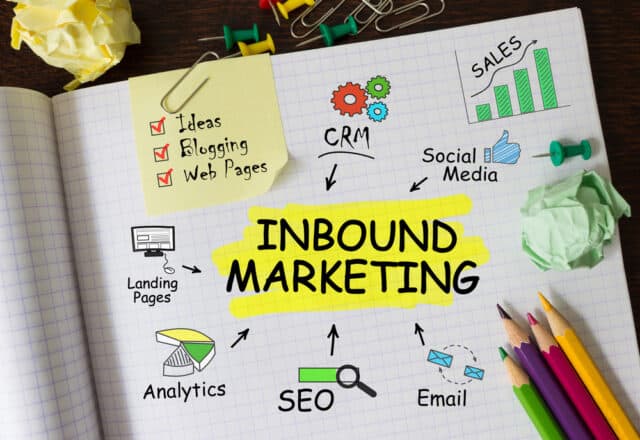
When you allow data to drive your inbound lead generation methods, you immediately improve their effectiveness. Data eliminates the guesswork from inbound lead creation.
Use your existing consumer data to uncover new business prospects. Look for common characteristics in your consumer base and utilize them to create your ideal match. The more specific you can be, the smoother it will be to create material that would appeal to them.
Inbound lead generation versus outbound lead generation: how do they differ?
The first contact with a lead is outbound lead generation. You make direct interaction with the prospect and strive to entice them to buy your goods.
It’s the tried-and-true way of lead generation that B2B enterprises have relied on for years. It includes cold calling, sending cold emails, and LinkedIn direct messages to people you’ve never met.
Many prospects dislike the disturbance to their day that a cold call or email causes. However, outbound lead generation may still be quite effective when done right.
What is the best technique for B2B?
Both ways of lead generation, inbound and outbound, have pros and downsides.
Inbound lead generation is beneficial in the long run since content marketing is almost always performing for you. It’s also inexpensive. You may also claim that inbound marketing produces higher-quality inbound leads. It fosters trust between you and your prospects.
Outbound lead creation, on the other hand, happens quickly. When you contact a prospect, you know right away if they’re willing to get involved or not. If your outreach is well-targeted and your sales reps contact your prospects in the proper way, it may be quite powerful.
Outbound is the approach to go if you need to generate sales right away. When you simply cannot wait for others to read your content, react, and sign in to your email list.
What is meant by Inbound Marketing?
Inbound marketing is a strategic approach that draws consumers by delivering relevant information and experiences that are targeted to their specific needs. Inbound marketing creates connections and answers issues that your consumer already has. Whereas outbound marketing bombards them with things they do not really always want.
Inbound Marketing Strategies
The strategies listed below can help you sell to your intended audience more effectively using inbound channels. There are unique techniques for each inbound approach to attracting, engaging, and satisfying consumers listed below to help your business develop.
a) Techniques for Attracting People
Inbound marketing strategies that entice potential clients and buyer personas include content marketing, creation, and development. To target the correct audience, start by creating and sharing quality information. It can be blog posts, multimedia resources, and social media posts.
It can also be tips about how to utilize your services and product. It can be documentation of how your offering can solve their issues. You can try client testimonials, and details on offers or discounts are all different options.
Optimize all this information using a search engine optimization strategy to attract your audience on a profound level via inbound marketing. Your SEO strategy must focus on specific keywords and phrases related to your products or offerings. It should also address the problems you solve for customers and how to help the target audience.
It will allow search engine results pages to show your content and information organically to searchers who are searching for it. i.e., your target market or ideal customers.
b) Strategies for Involvement
When employing inbound marketing methods to reach your target audience, make sure you communicate and engage with clients and prospects in a proper way. It should encourage them to establish successful relationships with you. Include information about the value your organization will deliver to them while using these engagement strategies.
An example of a specialized engagement approach is how you manage and arrange incoming sales calls. Give importance to how customer service representatives address calls from prospective consumers and clients. Also, instead of selling items, ensure that you’re always giving solutions.
This guarantees that all interactions conclude in mutually rewarding agreements for both customers and your business. In other terms, you provide value to your paying or right-fit consumers.
c) Delightful Strategies
Even after they’ve completed a transaction, delightful inbound strategies satisfy customers. It keeps them delighted and encouraged. Your team members serve the customer as experts and advisors. Using creative, well-timed bots as well as surveys to aid, facilitate, and get feedback from consumers is a great way to keep them happy.
Ensure that surveys and bots sound right and are effective. They should have been sent at certain points in the buyer’s journey. Chatbots, for instance, can help current customers establish a new approach or technique you’ve started offering that they’d often use.
Furthermore, 6 months after a customer purchases your service or product, an email marketing survey or consumer surveys could be sent out to collect feedback and communicate improvement ideas. Another important approach for delighting customers is social media listening.
Members of your social media accounts can use one of your pages to leave comments. They can pose questions or share their thoughts on your services/products.
Responding to these conversations with material that helps, promotes, and inspires followers shows that you pay attention to and care about them.
Lastly, an inbound marketing strategy oriented on guaranteeing customer happiness assists and helps consumers in all situations, irrespective of whether or not your company profits. Recall that a satisfied customer will become a brand advocate and promoter. So handle all interactions, big and little, with care.
Marketing with Inbound Methodology
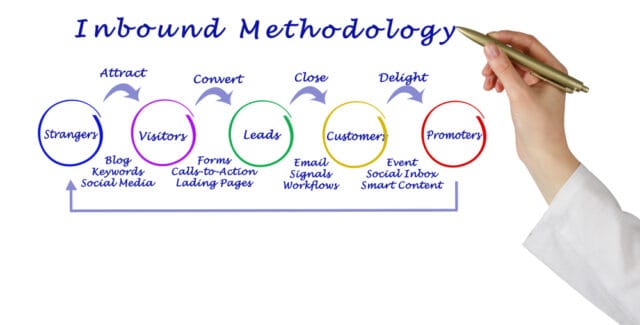
As a member of the inbound marketing team, your aim is to bring in new prospects to your firm. Connect with them on a large scale, and please them personally.
To keep the business expanding, you may also engage with your marketing and sales personnel. It’s a massive job, but the inbound technique and marketing hub will take care of it.
Why should you focus on Inbound Methodology?
An inbound methodology is a marketing technique that leverages content and discussions to attract customers and qualified prospects. It’s based on the idea that your brand can be more valuable to potential buyers if you give them something of value first, rather than selling directly.
It’s about providing valuable answers to questions in exchange for trust, becoming a thought leader, developing a following, etc. The goal is to make buyers feel like they already know you and are comfortable with buying from you. This method also increases the chances of making a sale since it is not considered direct sales or spam.
The most important aspect of this type of marketing is creating high-quality content regularly but don’t overdo it. If you try to make too much content, it will become outdated quickly. Instead, create enough content to feed your audience without being repetitive.
The best way to get ideas for topics is by asking yourself what people want to learn. Another great option is to look at successful websites and blogs today. Your perfectly optimized content goes here!
When customers thrive and inform others about it, it draws more clients to your firm, resulting in a self-sustaining growth cycle.
Subscribe to our Newsletter
Sign up to receive email updates on new product announcements, exclusive sales and marketing content, special offers on email validation plans, and more.
We send curated content as per your preference and do not indulge in spam!
What would you like to know about
We’re committed to your privacy. TuxMailer uses the information you provide to us to contact you about our relevant content, products, and services. You may unsubscribe from these communications at any time. For more information, check out our privacy policy.


